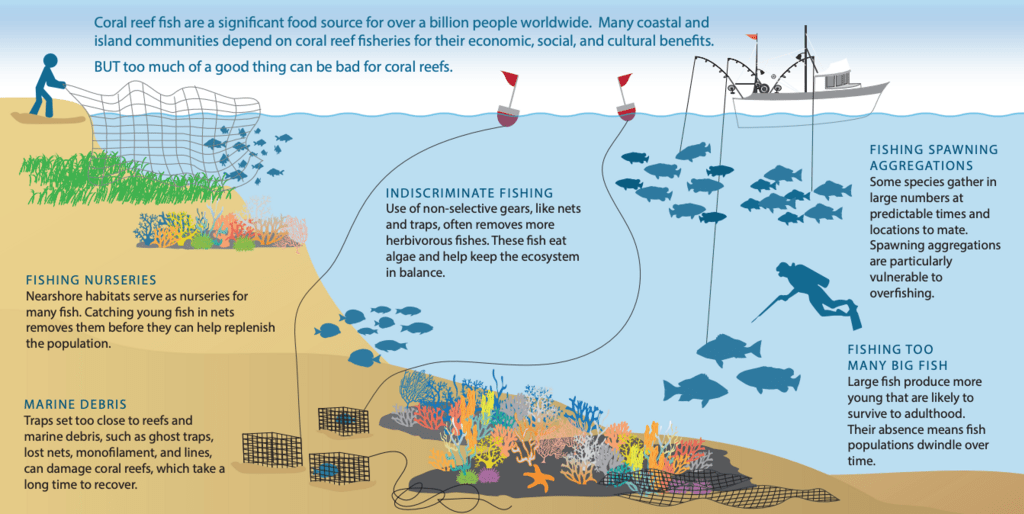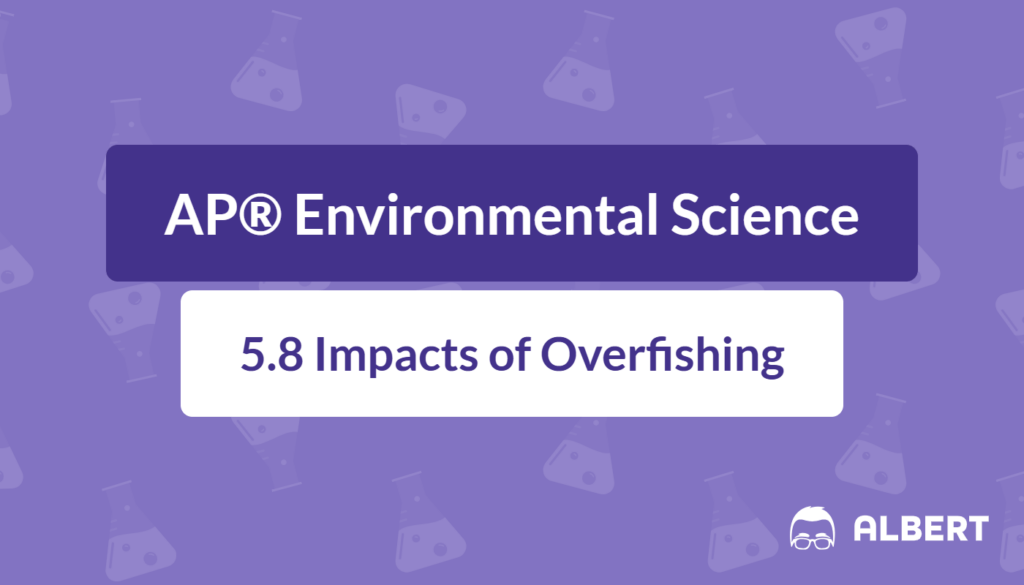What We Review
Introduction
Overfishing remains a critical environmental challenge in many parts of the world. Every year, vast quantities of fish are harvested from oceans, rivers, and lakes at rates faster than these populations can replenish. As a result, some fish stocks become so low that they struggle to survive or, in the worst cases, collapse entirely. The impacts of overfishing have far‑reaching implications, from disrupted marine ecosystems to negative economic outcomes in many coastal communities. Understanding overfishing is essential to formulating sustainable strategies that protect both aquatic resources and the people who depend on them.
This review explains the concept of overfishing, outlines its primary causes, considers its environmental and human impacts, and discusses potential solutions. It also offers illustrative examples to demonstrate how overfishing develops—and how it might be reversed through better regulations and sustainable fishing practices.
What Is Overfishing?
Overfishing occurs when fish are removed from a body of water faster than they can naturally reproduce and maintain healthy populations. This happens for many reasons, including demand for seafood and the use of high‑efficiency fishing technologies. When fishing practices are unsustainable, the targeted fish stocks eventually shrink and become too depleted to recover fully.
Sustainable fishing, by contrast, aims to keep fish populations at harvestable levels without harming the ecosystem’s ability to replenish itself. Organizations such as the Food and Agriculture Organization (FAO) recommend specific catch limits based on scientific assessments of fish populations each season. When fishers follow these limits, stocks are more likely to remain healthy. Unfortunately, the global scale of overfishing has expanded due to industrial fishing vessels, weak regulations, and high demand from growing populations around the world.
Example: Estimating Fish Population Growth
To understand fish population health, researchers often use a logistic growth model. A simplified version is:
\displaystyle \frac{dN}{dt} = rN \left(1 - \frac{N}{K}\right)Where:
- N = Number of fish in the population
- r = Intrinsic growth rate
- K = Carrying capacity of the environment
Step‑by‑Step Explanation:
- Initially, the population grows quickly when N is much smaller than K.
- As the population size approaches K, growth slows down because resources become limited.
- Overfishing can reduce N dramatically, causing the population to drop well below the sustainable threshold.
- If overfishing continues, the population could crash, disrupting the entire aquatic ecosystem.
Causes of Overfishing
Multiple factors contribute to overfishing in different regions. Understanding these causes is the first step toward reversing current trends.
- Overpopulation and Increased Demand
- Global populations depend heavily on fish for dietary protein. As more individuals require food, the quantity of seafood harvested rises. Moreover, international trade connects even distant regions, enabling scarce species to be sold quickly in global markets. Therefore, heightened demand encourages fishing fleets to target large numbers of fish species.
- Advances in Fishing Technology
- Modern equipment, such as deep‑sea trawlers, electronic fish finders, and drifting longlines, has dramatically increased the quantity of fish caught each trip. These tools make it easier for large vessels to locate and harvest fish stocks, often without fully measuring the impact on fish populations.
- Lack of Effective Regulations and Enforcement
- Weak governance or minimal enforcement of fishing quotas allows unsustainable catch levels. In many places, laws exist to protect fish stocks, but the infrastructure and resources needed to patrol vast ocean areas are limited. Consequently, illegal, unregulated, and unreported (IUU) fishing exacerbates the decline of fish populations.
Impacts of Overfishing
Overfishing presents immediate and long‑term harms for the environment and for communities. These include:
Scarcity of Fish Species
When fishers remove too many individuals of a species, that species declines. The extreme scarcity of some fish species can reduce biological diversity in aquatic systems.
Example: The Decline of Cod in the North Atlantic
- Centuries ago, cod was plentiful in the North Atlantic, supporting fishing communities in regions such as Canada and New England. As large vessels began to harvest cod intensively, cod populations fell below critical thresholds. Attempts to rebuild stocks through fishing bans and quotas have shown only partial success.
Step‑by‑Step Explanation:
- High Demand: Cod gained popularity among consumers, elevating short‑term profits for fishers.
- Increased Effort: Fishing fleets expanded, leading to higher catch rates.
- Population Overshoot: The cod population dropped so low that its rapid recovery became challenging.
- Management Plans: Quotas and restrictions attempt to allow stocks to rebound.
Effects on Biodiversity
Fish are crucial in maintaining the balance of marine food webs. When their numbers drop, the entire community suffers. Predators lose access to prey, plant growth may go unchecked (if fewer herbivores exist), and symbiotic relationships can become disrupted.
Example: The Role of Fish in Coral Reef Ecosystems
- Coral reefs harbor diverse organisms that rely on fish species to consume algae and clear space for coral to grow. Overfishing depletes algae‑eating fish, resulting in unchecked algal growth that smothers corals. Therefore, fish shortages degrade coral reefs, altering the habitat of many creatures found there.

Economic Consequences
Fishing helps many coastal communities sustain themselves. However, when fish become scarce, local economies suffer. Small‑scale fishers may struggle to earn enough income if they cannot reach profitable harvests.
Example: Communities in West Africa
- Large foreign trawlers often fish aggressively in the waters of West African nations. This reduces the fish supply for artisanal fishers who use smaller boats and cannot compete with bigger operations. Declining catches force local communities to pay higher prices for fish, and many fishers face the risk of unemployment.
Social and Food Security Issues
In numerous coastal countries, fish is a primary source of protein. Therefore, overfishing threatens communities that rely on this resource for nutrition and livelihood. Markets contend with price spikes and shortages, while families experience difficulty obtaining affordable, nourishing seafood.
Example: Global Fish Markets
- Rising demand for fish, combined with reduced stocks from overfishing, can increase prices worldwide. This situation places a burden on low‑income households that rely on fish as a cost‑effective protein source. When healthy fish options become unavailable or expensive, food security concerns often expand into broader socioeconomic problems.
Solutions to Overfishing
Though overfishing is a grave concern, solutions do exist to help rebuild fish stocks and protect aquatic ecosystems.
- Sustainable Fishing Practices
- Catch and Release Methods: Recreational fishers often use this method to minimize mortality by returning live fish to the water.
- Selective Fishing Gear: Innovations such as circle hooks or specialized nets are designed to reduce bycatch—the unintentional capture of non‑target species.
- Science‑Guided Catch: Tying catch limits to scientific recommendations allows fish populations the time and space to recover.
- Importance of Regulations and Fishing Quotas
- Imposing quotas sets an upper limit on how many fish can be taken each season. Quotas must be based on scientific population assessments to ensure sustainability. Furthermore, marine protected areas (MPAs) ban or tightly regulate fishing in ecologically sensitive zones, allowing fish to replenish naturally.
- Community Involvement and Education
- Grassroots awareness campaigns encourage local fishers and community members to adopt best practices. Educational programs that explain the consequences of overfishing can inspire compliance with catch restrictions. By sharing knowledge of sustainable fishing, local communities become empowered to balance current economic interests with long‑term ecological benefits.
Example: Step‑by‑Step Solution for a Hypothetical Fishery
Imagine a fishery on a small island that notices declining fish stocks:
- Assessment: Scientists evaluate the total population size (N) and determine the environment’s carrying capacity (K).
- Quota Setting: Policymakers establish a catch limit based on a fraction of the estimated population to prevent further decline.
- Enforcement: Local officials collaborate to monitor fishing vessels and ensure quotas are not exceeded.
- Community Workshops: Fishers learn about selective gear that targets only adult fish, allowing juveniles to mature.
- Monitoring and Adjustment: Data on fish stocks are regularly updated, and the quota is adjusted to maximize sustainability and economic benefits.
Conclusion
Overfishing represents a significant ecological and human issue, leading to a scarcity of fish species, reduced biodiversity, and economic disagreements. Entire marine food webs can unravel when fish populations plummet, and communities dependent on traditional fishing face severe hardships. Therefore, it becomes necessary to shift toward sustainable fishing methods and robust regulations. Equally important is the involvement of local communities, who often stand to lose the most if fisheries collapse. If every entity—governments, industry leaders, and community members—acts collectively, fish populations can begin to recover, creating a more resilient and balanced future for all.
Key Vocabulary
- Overfishing: The depletion of fish stocks by catching more fish than populations can replace naturally.
- Biodiversity: The variety of living organisms within an ecosystem, critical to ecological resilience.
- Sustainable Fishing: Harvesting fish in a way that maintains fish populations and ecosystem health over the long term.
- Bycatch: Non‑target species caught unintentionally while fishing for a particular species.
- Marine Protected Areas (MPAs): Regions of the ocean where human activity is restricted to conserve marine life and habitats.
Sharpen Your Skills for AP® Environmental Science
Are you preparing for the AP® Environmental Science test? We’ve got you covered! Try our review articles designed to help you confidently tackle real-world AP® Environmental Science problems. You’ll find everything you need to succeed, from quick tips to detailed strategies. Start exploring now!
Need help preparing for your AP® Environmental Science exam?
Albert has hundreds of AP® Environmental Science practice questions, free response, and full-length practice tests to try out.








